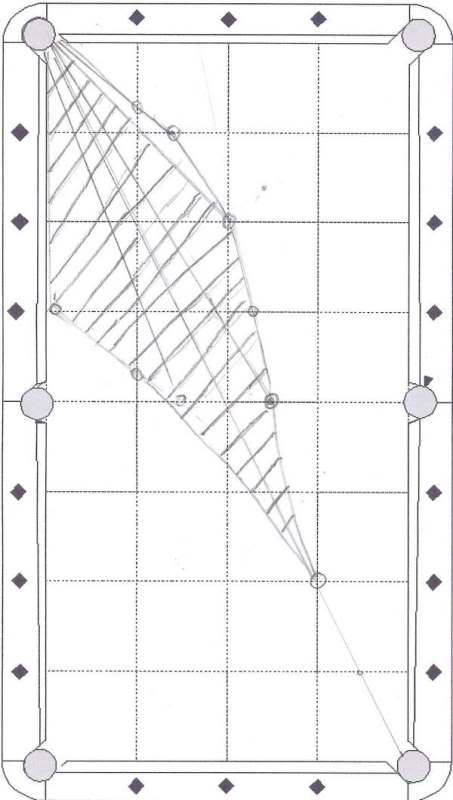I agree that aiming at the contact point (determined as the line from the back of the OB to the center of the pocket opening is (for me) the best way to aim. However, I think there is more to the aiming process. Recently I have begun to concentrate on two additional aspects of the problem. It seems these aspects receive very little attention in most discussions of this type.
It is the “front” of the CB that strikes the OB. Therefore one must know the center line through the CB and then learn to use the right part of the CB (relative to its center line) to pocket the OB. This is true for straight in and for cut shots.
To “aim” with a cue stick one must line up the front and the rear of the cue stick to place the CB on the best line (depending upon contact point, English, swerve, etc). When I concentrate on what I am aiming with such as the area between my thumb and index finger I am more often accurate when shooting. Recently I have learned that Snooker players call this the V grip and it amounts to the rear site in my thinking.
Consistent ball pocketing requires all three skills.
It is the “front” of the CB that strikes the OB. Therefore one must know the center line through the CB and then learn to use the right part of the CB (relative to its center line) to pocket the OB. This is true for straight in and for cut shots.
To “aim” with a cue stick one must line up the front and the rear of the cue stick to place the CB on the best line (depending upon contact point, English, swerve, etc). When I concentrate on what I am aiming with such as the area between my thumb and index finger I am more often accurate when shooting. Recently I have learned that Snooker players call this the V grip and it amounts to the rear site in my thinking.
Consistent ball pocketing requires all three skills.
